#United States history
Text
Okay. So I know I'm 2 days late for the 4th of July but I only now remembered this gem of a story.
We love to dunk(deservedly) on American pride/patriotism. But you probably didn't know how bad the story of Mount Rushmore, one of the most important places of the American mythos, is.
Like, not just bad, it is so mindnumbingly evil that it's almost unbeliveable it's not a children's movie plot.
To start off, it's built on stolen Indian land, and not "just" stolen like the rest of the country, it was extra stolen.
The mountain itself was among the natives called Six Grandfathers and it's one of the most important spiritual sites for many local tribes.
Then, the United States in the mid 19th century signed a deal with the local tribes, granting the tribes the right to their land (which belonged to them for millennia prior) in exhcange for some concessions.
The US broke the treaty immediately, a war broke out, the US lost, and signed another similar treaty, then they found gold a few years later, went to war again, won this time and did a genocide, emptied the land and sold some off it to white settlers.
Many decades later, in the 1920s, the local government working with sculptor G. Borglum(who also made monuments to the Confederacy, and was a known KKK supporter) decided they wanted to make a tourist attraction.
So they carved into a 3-times-stolen, Native American holy mountain, the faces of George Washington(who earned himself the nickname Burner of Towns from the local population), Thomas Jeferson(a racist, rapist, pedophile and owner of 260 slaves), Theodore Roosevelt(quote:"I don’t go so far as to think that the only good Indian is the dead Indian, but I believe nine out of every ten are") and Abraham Lincoln(by far the least worst one, but still a racist, imperialist, standard US president material). With dynamite.

#ramblings#not a reblog#politics#when our turn comes#we shall not make excuses for the terror#native#native american#history#4th of july#united states#united states history#mount rushmore#socialism#capitalism#communism#long posts#text post#left wing#geography#imperialism
198 notes
·
View notes
Text





38 notes
·
View notes
Text
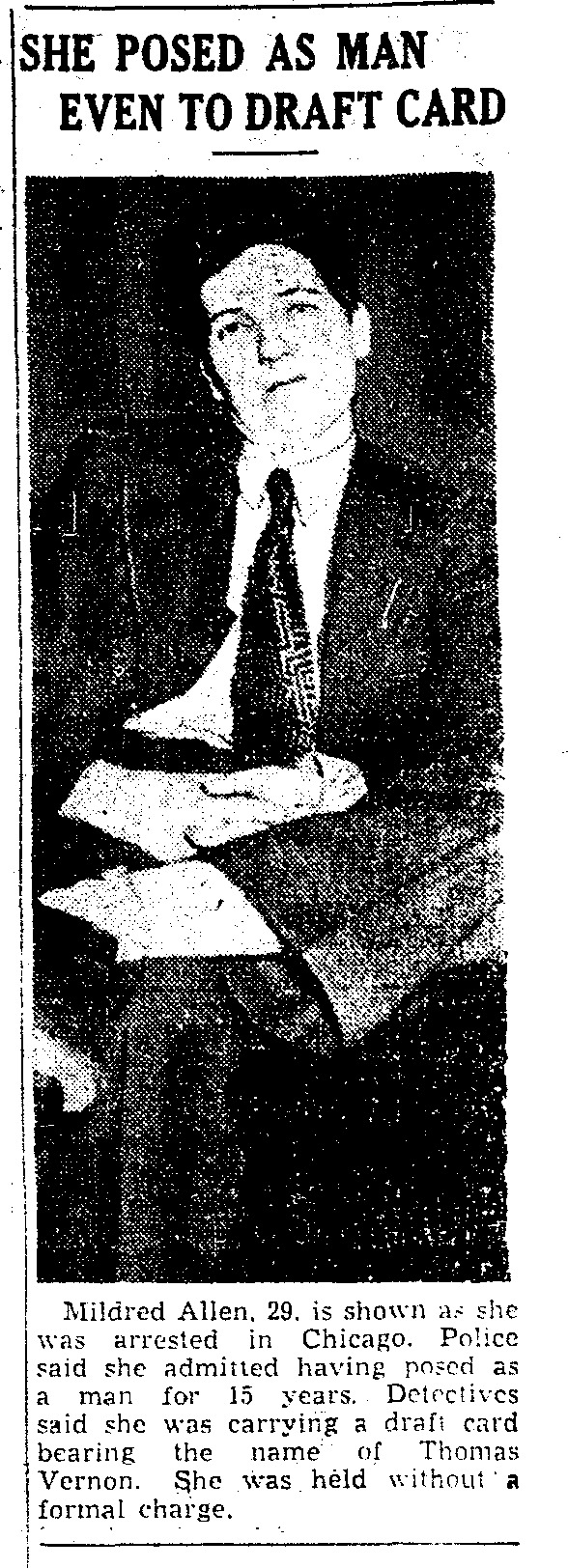
"SHE POSED AS MAN EVEN TO DRAFT CARD," Toronto Star. January 5, 1943. Page 2.
----
Mildred Allen, 29. is shown as she was arrested in Chicago. Police said she admitted having posed as a man for 15 years. Detectives said she was carrying a draft card bearing the name of Thomas Vernon. She was held without a formal charge.
#chicago#male impersonator#cross dressing#men's clothing#history of feminities#history of masculinities#queer history#draft dodgers#military enlistment#united states history#world war ii#history of crime and punishment
34 notes
·
View notes
Text
On This Day In History
November 13th, 1922: Zucht v. King United States Supreme Court upholds mandatory vaccinations in public schools in a 9-0 ruling, even if there was no ongoing outbreak.
#history#world history#united states history#scotus#vaccinations#vaccines#zucht v king#supreme court#legislative history#smallpox
184 notes
·
View notes
Text

youtube
#usa#united states#united states of america#important#social justice#human rights#current events#history#history posting#history tumblr#history side of tumblr#video essay#political#political posting#politics#american history#united states history#world history#wwii#world war ii#ww2#ww2 history#world war 2#us imperialism#western imperialism#american imperialism#imperialism#colonialism#settler colonialism#youtube
5 notes
·
View notes
Text



#Cubana flight 455#Terrorism#gusanos#united states history#Flight#airplane#1976#cubana#cuba#state sponsor of terrorism#FBI#cia
56 notes
·
View notes
Text
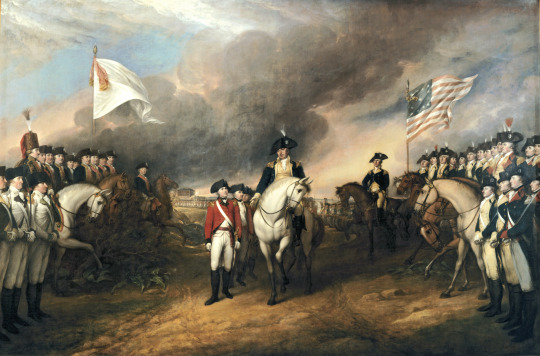
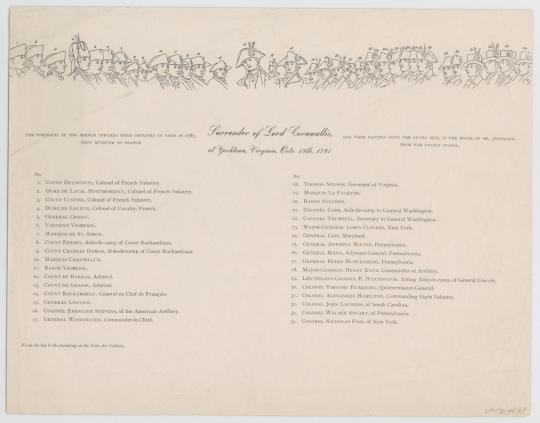

The Surrender of Lord Cornwallis is an oil painting by John Trumbull. The painting was completed in 1820 and hangs in the rotunda of the United States Capitol in Washington, D.C.
The painting depicts the surrender of British Lieutenant General Charles, Earl Cornwallis at Yorktown, Virginia, on October 19, 1781, ending the siege of Yorktown, and virtually guaranteeing American independence. Included in the depiction are many leaders of the American troops that took part in the siege. [X]
#otd#on this day#us history#history#art#john trumbull#american revolution#revolutionary war#american war of independence#united states of america#united states history#october
97 notes
·
View notes
Text


December 1948: Elvis (at 13 years old) checked out the book 'Courageous Heart' from the library at Humes High School in Memphis. I'm positive this book is "Courageous Heart: A life of Andrew Jackson for young readers" (1934) by Bessie Rowland James, Marquis James.
#elvis history#elvis presley#elvis the king#elvis fans#elvis fandom#elvis#40s elvis#baby elvis#humes high school#army#united states history#history books
7 notes
·
View notes
Text
Every time a black face makes progress for black faces, the United States will surely be there to extinguish that light
#black people#black men#united states history#patrice lumumba#gaddafi#jfk#cia#assassination#regime change#colonizers
29 notes
·
View notes
Text
using bucky barnes's 'murder walk' to regain space
This is Sunn m'Cheaux and he's amazing, and also this is a perspective worth hearing.
7 notes
·
View notes
Photo

"Confederate veteran reunion, Washington, 1917. Most of these men had grandfathers or great-grandfathers who were soldiers in the American Revolution and fathers or grandfathers who fought in the War of 1812.”
66 notes
·
View notes
Text
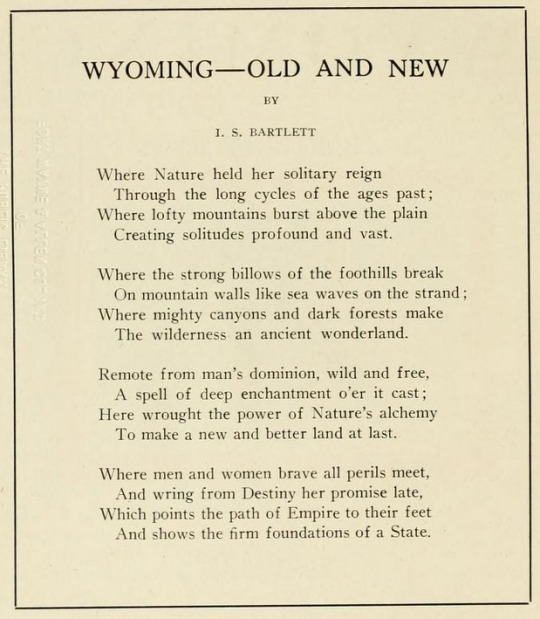
"Wyoming--Old and New" by J.S. Bartlett. History of Wyoming, Vol. I, published by the S. J. Clarke Publishing Company, 1918.
#personal#wyoming#wyoming history#united states history#us history#prairie state#the old west#western history#sj bartlett#western state#poetry#poem
6 notes
·
View notes
Text
Billy Possum, the sequel to Teddy bears
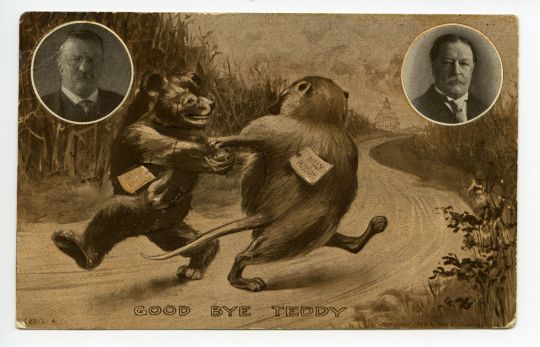
Billy Possum was the proposed sequel to the Teddy Bear after William Howard Taft was elected president following Theodore Roosevelt.
Teddy bears were introduced after Theodore Roosevelt refused to shoot a tied-up bear while hunting, seeing it as unfair and cruel to the bear. A political cartoon was drawn depicting this which was very popular, and the increasing cuteness in different iterations of the drawing led to people viewing bears as cute and thus, becoming an idea for a new toy.

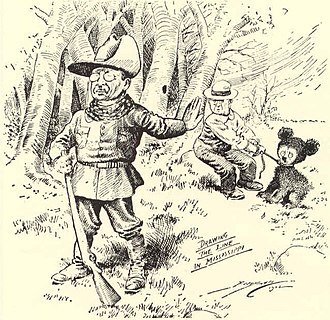
The closest comparison I can come up with is if after Harambe was killed, plushie gorillas became so popular that it became a cultural staple.
Anyways, after Taft was elected, people came to him with their idea for the next big toy, Billy Possum. The name Billy, of course, was a shortening of his name, similar to Teddy, but instead of the possum being something that Taft defended and people took as a sign of his humanity and it becoming cute in the social eye, it was just because Taft liked to eat possum meat. Needless to say, it didn't catch on.
Here's a modern recreation of the pattern, and I must say, as someone with a lot of stuffed animals, I would never have bought this either.

14 notes
·
View notes
Text
"Confederate monuments bear what the anthropological theorist Michael Taussig would call a public secret: something that is privately known but collectively denied. It does no good to simply reveal the secret — in this case, to tell people that most of the Confederate monuments were erected not at the end of the Civil War, to honor those who fought, but at the height of Jim Crow, to entrench a system of racial hierarchy. That’s already part of their appeal. Dr. Taussig has argued that public secrets don’t lose their power unless they are transformed in a manner that does justice to the scale of the secret. He compares the process to desecration. How can you expect people to stop believing in their gods without providing some other way of making sense of this world and our future?
Swords Into Plowshares might have been the first to propose melting, but other communities are working out their own creative visions for Lee’s afterlife. One of the biggest changes so far has been at Arlington House, the historic plantation mansion at the center of Arlington National Cemetery, which is the official national Robert E. Lee Memorial. In 2021, Arlington House reopened with displays not only about Lee’s family, who lived there after they inherited it from Lee’s father-in-law, but also about the lives of the families enslaved there. Even Lee’s burial site at Washington and Lee University in Lexington, Va. — where he served as president after the war — has changed. The university decided to focus on Lee the civilian rather than Lee the general, for example by moving a prominent portrait of him in uniform. And it constructed a wall to enclose the large sculpture of Lee that once claimed an insistent place in the university’s chapel.
Covering this story over the past few years, I’ve come to realize two things. First, when a monument disappears without a ceremony to mark why it is coming down, a community has no chance to recognize that it has itself changed. (Ideally the ceremony is public, but because of safety concerns, the melting I attended was not.) Second, if you are outraged that something’s happening to your community’s heroic statue of Lee, you’re not going to be any less outraged if the statue is moved to some hidden storeroom than if it’s thrown into a landfill. So if all changes, large or small, will be resisted, why not go for the ones with the most symbolic resonance?
That’s why the idea to melt Lee down, as violent as it might initially seem, struck me as so apt. Confederate monuments went up with rich, emotional ceremonies that created historical memory and solidified group identity. The way we remove them should be just as emotional, striking and memorable. Instead of quietly tucking statues away, we can use monuments one final time to bind ourselves together into new communities.
...
When the remaining legal barriers were cleared (including a last-minute lawsuit that sought to have the statue reassembled), Lee was finally ready to surrender to the furnace. The foundryman turned on the propane supply and laid Lee’s sword across the hole in the lid. He told the spectators that the metal had to get hot enough to release any moisture before he maneuvered it down through the hole into the crucible.
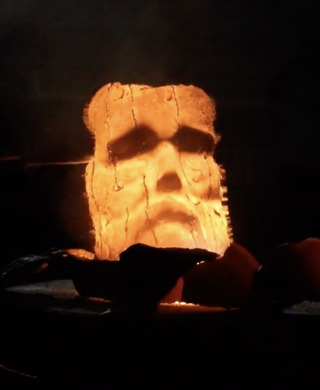
When he did, its blade stuck up out of the furnace for a moment, then melted down “like a stick of butter,” as Dr. Schmidt put it.
Lee’s face was the last piece to go into the crucible. Given how often the monument and its ideals were celebrated with flames — from Klansmen’s torches to the tiki torches of white nationalists in 2017 — it seemed fitting for flames to close over the monument.
...
Dr. Douglas, Swords Into Plowshares’ other co-founder, apologized that the ceremony could not be public. She thanked those in attendance, telling us we were witnessing it on behalf of Charlottesville’s residents, including those long gone who lived under slavery. Someday, she said, when we think of Civil War heroes, we will imagine not Lee but, instead, those who fought for their freedom against him.
The man in the protective visor dropped the red-hot piece of metal that once represented Lee on the ground. It fell to pieces, which he fed into the crucible. A line of cameras faced him, making new images of history as the old image finally disappeared in flames.
- Erin Thompson, "The Most Controversial Statue in America Surrenders to the Furnace." New York Times. October 24, 2023. Photo by Eze Amos.
#swords into plougshares#confederate monuments#robert e. lee#tear them down#historical monuments#american civil war#historical memory#united states history#united states politics
14 notes
·
View notes
Text
On This Day In History
December 26th, 1862: The largest mass execution in U.S. history takes place. 38 Native Americans were publicly hanged in Mankato, Minnesota, as part of the Dakota War of 1862.
#history#world history#dakota history#united states history#usa history#minnesota#indigenous history#dakota war of 1862#tw racism#racism#tw death#death#tw hanging#hanging#anti indigenous racism#american imperialism
75 notes
·
View notes
Text




Here’s my personal recommendation of a YouTube channel to check out:
#tumblr recommendations#recommendation#recommend#youtube recommendations#youtube#youtuber#youtube channel#history#history posting#history tumblr#history side of tumblr#american history#united states history#ancient history#recent history#usa history#the americas#educational#education#educational content
3 notes
·
View notes